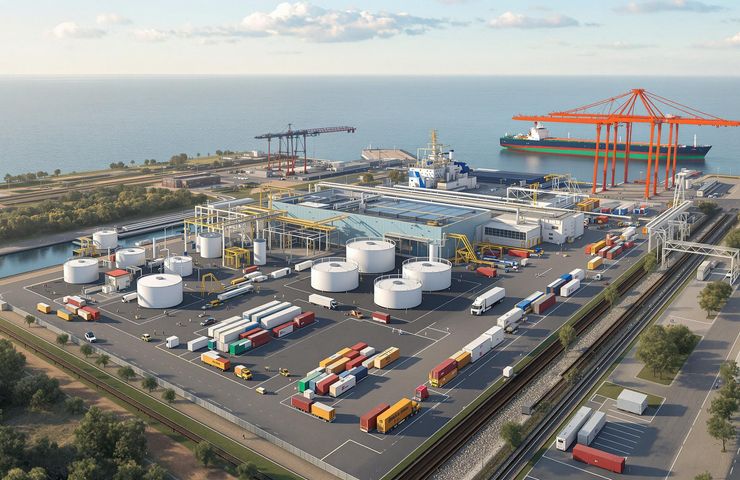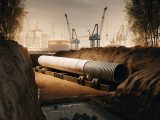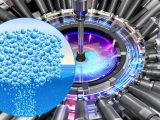
Klaipėda Port’s Hydrogen Production Facility to Start in 2026
August 8, 2025It’s official: the Klaipėda State Seaport Authority just kicked off construction on the Baltic region’s first green hydrogen production and bunkering station at Klaipėda Port in Lithuania, and they’re aiming to light the torch by February 2026. This place will churn out around 127 tonnes of green hydrogen each year using a PEM electrolyser powered entirely by renewables. And it’s not just for ships – we’re talking maritime refueling, road haulage, and even urban transport. Cost? €12 million, half of which comes from the EU’s NextGenerationEU program. It’s a pretty clear signal that industrial decarbonization is more than buzzwords in the Baltic.
Key Insights
- It’s the very first green hydrogen production and bunkering station in the Baltic States.
- It’ll handle about 127 tonnes per year, fueling everything from cargo ships to buses — and maybe even trains down the line.
- The total tab is €12 million, with a cool €6 million courtesy of NextGenerationEU.
- Gevalda is at the helm, shooting for construction wrap-up by late 2025 and a launch in February 2026.
- Bega and LTG Group will be the first to test-drive hydrogen in port terminals and rail gear.
- It lines up perfectly with the EU Green Deal goals and Lithuania’s energy security game plan.
Industry Context
Think of Klaipėda Port as Lithuania’s front door to the world — it’s been a key trade hub since the Middle Ages. Now, EU bigwigs are throwing their weight behind zero-emission tech through the Green Deal and NextGenerationEU. Sure, Rotterdam and Hamburg have tinkered with hydrogen bunkering pilots, but Klaipėda is breaking ground on-site for full-on hydrogen production, storage, and bunkering. That’s a game-changer for Baltic shipping, trucking, and beyond.
Historical Context
This port has seen it all: Hanseatic League merchants wheeling their wares in the 13th century, Soviet-era shipyards churning out vessels, and a post-2004 EU makeover that deepened channels and added slick rail and road links. But up to now, it’s relied on fossil bunkers. This new green hydrogen project flips the script, pushing local, renewable energy front and center—exactly what Lithuania signed up for when it joined the EU: more energy options and less dependence on old-school fuels.
Technical Dive
At its core, the station uses a Proton Exchange Membrane (PEM) electrolyser to split water into hydrogen and oxygen with electricity from clean sources. PEM tech is a popular choice because it delivers high-purity output, reacts quickly to changes in power supply, and can be scaled up by stacking modules. Once that green hydrogen’s made, it’s squeezed to 350–700 bar, stuffed into high-pressure tanks, and piped out through a bespoke bunkering setup—complete with double-walled pipes, smart valves, and leak detectors. No more trucking hydrogen in; the entire chain stays lean and low-emission.
Business & Strategic Outlook
Funded as part of Lithuania’s post-Covid recovery under the Next Generation Lithuania plan, this €12 million venture leans on around €6 million from the EU’s NextGenerationEU fund. Gevalda nailed the public tender and is steering the build toward a late-2025 finish, with handover in February 2026. Meanwhile, Bega will kick the tires on hydrogen-powered forklifts and yard trucks, and LTG Group is eyeing hydrogen for rail moves. For Director General Algis Latakas and team, these aren’t just pilots—they’re the first stepping stones toward a Baltic-wide hydrogen economy.
Strategically, this station kills two birds with one stone: it fuels economic recovery and bets big on green transition. The EU’s backing underscores Brussels’ drive for sturdy, low-carbon infrastructure. And beyond cutting port emissions, everyone’s hoping this hub sparks new green investments and trains up a local workforce skilled in hydrogen technologies.
Collateral Impacts
- Major CO₂ cuts for sea vessels and land haulers.
- A growing talent pool in hydrogen production and safety protocols.
- Kickstarting related industries—think fuel cell makers, service outfits, R&D labs.
- Fast-tracking regulations around hydrogen infrastructure and use.
- Potential hiccups in locking down long-term hydrogen offtake deals.
Analysis
Klaipėda’s hydrogen hub will be the acid test for on-site electrolysis, storage safety, and multi-user bunkering. Hitting that early-2026 production goal could turn heads in Tallinn and Riga. But tech alone won’t seal the deal. To drive demand from shipping lines, bus fleets, and rail operators, you need competitive pricing, clear incentives, and rock-solid regulation. And don’t forget the human side: training technicians who can handle high-pressure gear and the quirks of electrolyzers calls for close cooperation between schools and industry.
On top of that, operators have to wrestle with market swings: power-cost volatility, hiccups in the electrolysis supply chain, and nailing down financially viable offtake contracts. The silver lining? The station’s modular build means you can ramp up capacity as the market matures, dialing down risk for future investors.
Looking Ahead
By bringing hydrogen production, storage, and bunkering under one roof, Klaipėda Port is staking its claim as a Northern European hydrogen hub. With construction rolling right now and the first fuel ups slated for early 2026, this project shows that a local, zero-emission ecosystem isn’t just a pipe dream. It’s a clear shot across the bow: the Baltic is gearing up for a clean hydrogen era.



 With over 15 years of reporting hydrogen news, we are your premier source for the latest updates and insights in hydrogen and renewable energy.
With over 15 years of reporting hydrogen news, we are your premier source for the latest updates and insights in hydrogen and renewable energy.